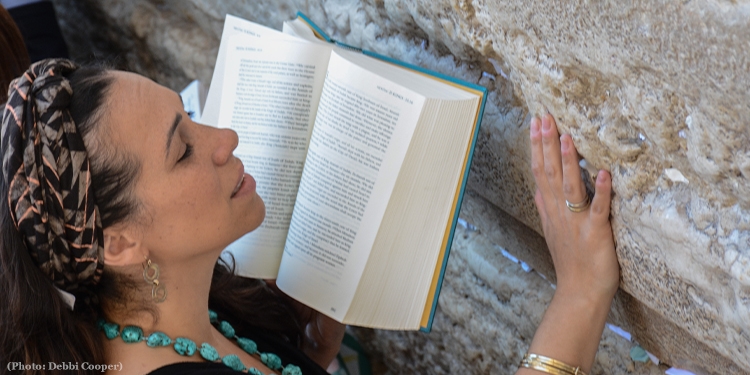The Lessons of Faith
Yael Eckstein | October 7, 2020

We hope you’ll enjoy this excerpt from Yael’s book, Generation to Generation: Passing on a Legacy of Faith to Our Children.
From God’s commandment to Abraham to leave his homeland for a land he did not know following a God that he could not see, to the nation of Israel standing on the shores of the Red Sea with the mighty Egyptian army at their heels, to the prophet Daniel facing certain death in the lion’s den, the Torah is filled with stories and lessons about faith in God.
In fact one of the greatest Jewish sages, the 18th-century Rabbi Elijah of Vilna, taught that the entire purpose of the Bible is, “So that your trust may be in the Lord” (Proverbs 22:19). Indeed, what is the purpose of any faith community if not to inspire faith in our Heavenly Father?
However, upon closer examination, it is clear that there are different levels of faith. There is a foundational belief in God, including the conviction that He is all-knowing, all-powerful, and all-loving. In Jewish tradition, we affirm 13 principles of faith each day, such as our belief that God created the world and the belief that the messiah will come. Every day, we declare that we believe in God’s existence and acknowledge His involvement in the world.
Believing and Trusting in God
Yet, there is another type of faith, one which requires us to take what we believe in our head and unite it with our heart so that we live out our faith. This type of faith requires that we not only believe in God, but that we also trust God — day in and day out, moment to moment.
The great 19th-century Torah scholar Rabbi Israel Salanter said, “The longest distance between two points is the distance between the head and the heart.” These two levels of faith — between what we believe with our mind and know in our heart — are, indeed, often worlds apart. Bridging the two is part of our lifelong service to God. In the Christian Bible, the apostle Paul described it this way, “For we live by faith, not by sight” (2 Corinthians 5:7).
Faith on a Tightrope
There is a wonderful story that illustrates this. Around the mid-1800s, a man known as the Great Blondin attempted to cross Niagara Falls on a tightrope. Five thousand people gathered to watch. In the middle of the walk, Blondin suddenly stopped, backflipped into the air, landed on the rope, and then continued safely to the other side. Blondin would cross the Falls many more times — once blindfolded, once carrying a stove, once in chains, and once on a bicycle.
One time, however, he showed up with a wheelbarrow. Blondin turned to the crowd and shouted, “Who believes that I can cross pushing this wheelbarrow?” Every hand in the crowd went up.
Blondin pointed at one man. “Do you believe that I can do it?” he asked. “Yes, I believe you can,” said the man. “Are you sure?” said Blondin. “Yes,” said the man. “Absolutely certain?” “Yes, absolutely certain.” “Thank you,” said Blondin. “Then, sir, get into the wheelbarrow.”
Anyone can have a belief, but how many of us are ready to stake our lives on what we believe? There will be times in our lives when our faith will be strong, but our fear will seem stronger. We will all have to decide if we are willing to step into the wheelbarrow and trust that God will deliver us safely across the wire.

